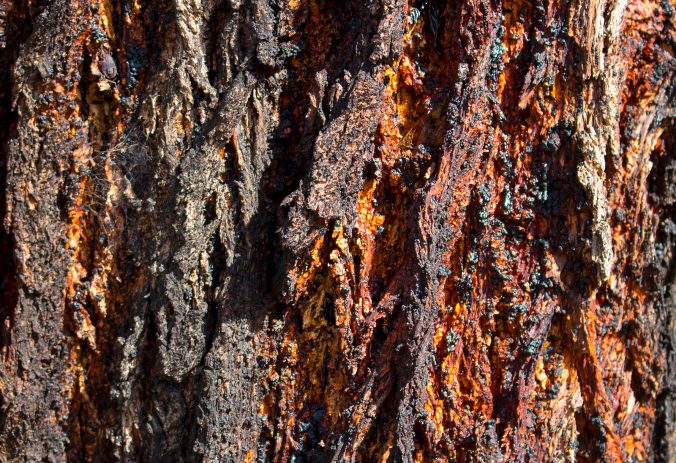Ironbark trees are well woven into Australia’s folklore. They feature in poetry and essays from colonial times to the present. A common name of a number of species in three Eucalyptus groups, ironbark trees have dark, deeply furrowed bark. They are probably the most distinctive and easily recognised tree of the Australian eucalypt forest and are the source of some of our highest quality hardwoods.
Instead of being shed annually as in many of the other species of Eucalyptus, the dead bark accumulates on ironbark trees, forming the fissures. It becomes rough after drying out and becomes impregnated with kino, a dark red sap exuded by the tree.
The tree is so named for the apparent resemblance of its bark to iron slag. The bark is resistant to fire and heat and protects the living tissue within the trunk and branches from fire. In cases of extreme fire, where leaves and shoots are removed, the protective bark aids in protecting epicormic buds which allow the tree to reshoot.
Ironbark bark is typically very rugged, dark grey, hard, deeply furrowed. There are some variations, however, broadleaved red ironbark, for example, has flaky and relatively soft bark, particularly in young trees, whilst in other species the bark can be rather corky and the fissures shallow and widely separated. So corky is the bark of grey ironbark that it was once examined as a possible substitute for cork.
Grey ironbark … ironbarks are probably the most distinctive and easily recognised tree of the Australian eucalypt forest and are the source of some of our highest quality hardwoods.
The ironbarks are trees of the east and north of Australia. They do not occur in Tasmania or the south-western part of the continent. There is considerable variation in the environments in which the different species grow, from excessively drained sandy or stony soils in a rainfall of 400 mm for red ironbark to deep loans bordering the rain forest in the 1500 mm rainfall region, where grey ironbark sometimes occurs. The ironbarks are able to tolerate seasonal droughts on unfavourable sites, such as stony ridges, but under these conditions they deteriorate in size and form.
The timber of the ironbark trees is among the most valuable and widely regarded of the Australian hardwoods. They are dark brown with paler sapwood, or dark red with yellow sapwood and a very hard, dense, strong and very durable, with a fine uniform texture and interlocking grain. Ironbark timber continues to attract a price premium over other Australian hardwoods.
Ironbark species include narrow-leaved red ironbark, broad-leaved red ironbark, silver-leaved ironbark, Queensland grey ironbark grey ironbark, grey ironbark and red ironbark.
